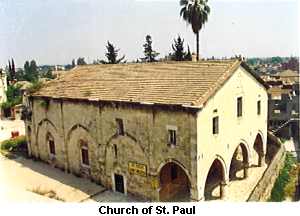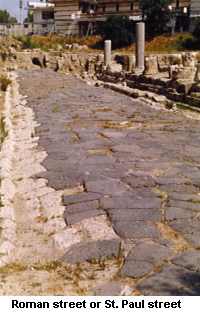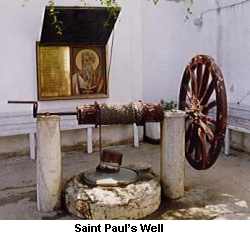TARSUS
 St. Paulís birthplace of Tarsus is one of the oldest settlements in Cilicia.
Excavators, working on the mound rising in the northwest quarter of the city have
un-covered evidence of settlements here in the Chalcolitic (fourth millennium BC), Early
Bronze, Hittite, Hellenistic and Roman periods. St. Paulís birthplace of Tarsus is one of the oldest settlements in Cilicia.
Excavators, working on the mound rising in the northwest quarter of the city have
un-covered evidence of settlements here in the Chalcolitic (fourth millennium BC), Early
Bronze, Hittite, Hellenistic and Roman periods.
Alexander the Great marched through
southern Anatolia in 334 BC on the route to his lightning conquest of the East. He stopped
long enough in Tarsus to catch what was almost his death of cold swimming in the Cydnus
River (Tarsus  «ayż). When
his empire was divided, the southern portion fell to his general Seleucis Nikator. In 66
BC the government of the province of Cilicia - and of Tarsus as the capital - passed from
Seleucid administration to that of Rome. Mark Antony made it a city free
of some taxations, perhaps because he had been captivated by one of the ageís more
popular flirts, Cleopatra, who sailed into Tarsus to meet him with all
her flags flying. «ayż). When
his empire was divided, the southern portion fell to his general Seleucis Nikator. In 66
BC the government of the province of Cilicia - and of Tarsus as the capital - passed from
Seleucid administration to that of Rome. Mark Antony made it a city free
of some taxations, perhaps because he had been captivated by one of the ageís more
popular flirts, Cleopatra, who sailed into Tarsus to meet him with all
her flags flying.
According to Plutarch, Cleopatra arrived "...
sailing up the river Cyndus in a barge with gilded stern, outspread sails of purple, and
silver oars moving in time to the sound of flutes, pipes and harps. Dressed like
Aphrodite, the goddess of love Cleopatra lay beneath an awning bespangled with gold, while
the boys like painted cupids stood at each side fanning her."
The Emperor Julian the Apostate was buried in Tarsus
after his defeat in his battles with the Persians in 364. The place of that grave is no
longer known. The Emperor  Trajan also
died here, and his heir, Hadrian who was with him, assumed the power. Trajan also
died here, and his heir, Hadrian who was with him, assumed the power.
The most famous person associated with Tarsus in religious history is Paul the Apostle. Paul was born a Jew of the tribe of Benjamin in
Tarsus about AD 10 and spent his early years here. His father was a Roman citizen; Paul
inherited that citizenship and its rights.
Tarsus originally was a seaport on a lagoon at the mouth of the Cydnus
River. But, during the reign of Justinian in the 5 century, the course of the river was
altered in a vain attempt to save the city from periodic flooding an d to stave off the demise of Tarsus as a port. d to stave off the demise of Tarsus as a port.
The most striking evidence of the Hellenistic and Roman wall of Tarsus
is the west city gate called popularly either Cleopatraís Gate or St. Paulís Gate.
Some traditions are associated with an old structure known as Saint
Paulís Well. Numerous people believe that the water from the well has healing
properties. |